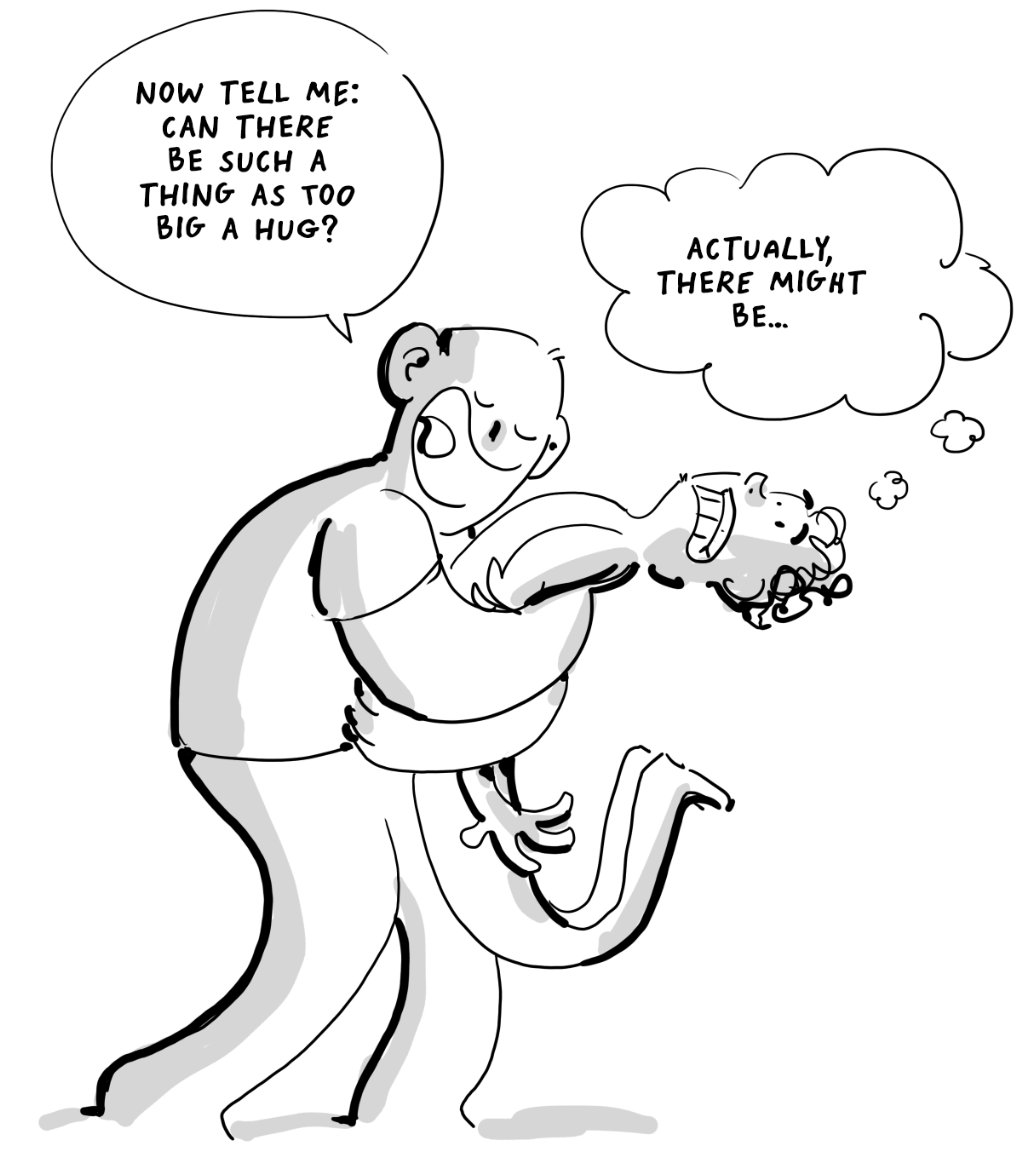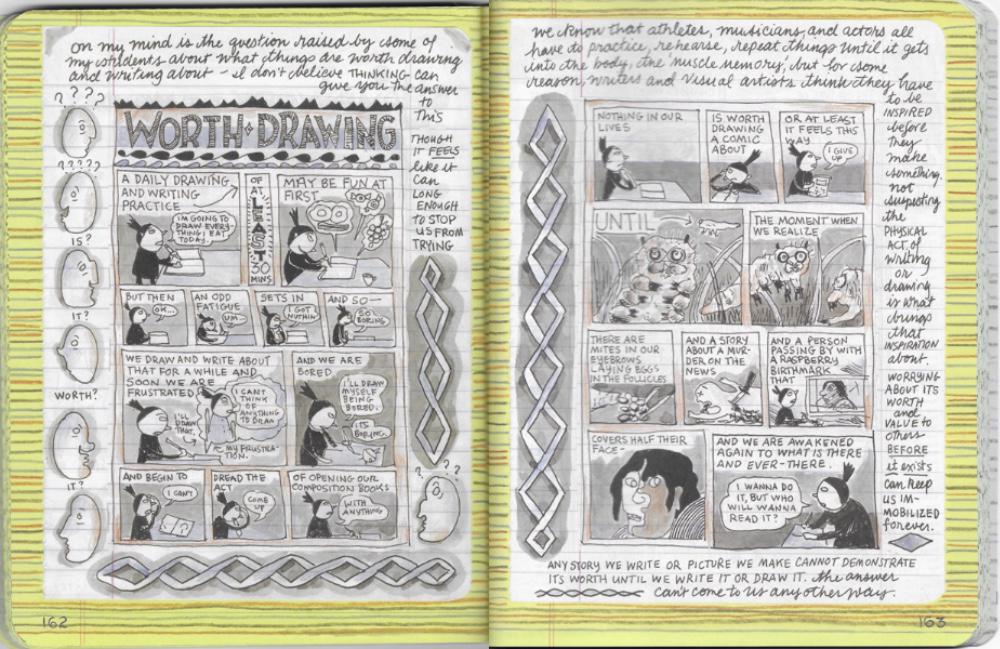Thank you to everyone who wrote to me after last week’s difficult letter. I printed out all of your emails and glued them into my sketchbook in a page titled “Hugs from strangers”.
Hugo even drew me this rad picture:

A cartoon drawn for me by Hugo
Your words, pictures and stories kept me going in an otherwise grim week, so thank you
A few weeks back Lino replied to Letter #53 recommending Lynda Barry’s book Syllabus, which I have been devouring. It is a collection of hand-drawn class plans and homework assignments for two university courses I wish I could have taken when I was 20 years old.
Lynda’s aim is simply to get her students to discover that drawing is a way of thinking - that you draw in order to think.
Too often it happens the other way around: we think we must know what to draw (and how to draw it) before we put pen to paper - and this paralyses us.
These two pages show you what Lynda means while also giving you a sense of her fabulous style.

I mean…this just feels so true, right? The biggest hurdle for me in starting a sketchbook habit is the paralysing thought: ‘I don’t have anything to draw.’
She writes:
I know that if I can just keep them (her students) drawing without thinking about it too much, something quite original will appear. The trick seems to be this: consider the drawing as a side-effect of something else. A certain state of mind that comes when we gaze with open attention.
Not long ago I was talking with a fellow artist at my (now cancelled 😫) life-drawing class. He was drawing in felt tip pen and I was trying charcoal for the first time - two mediums which are are hard to erase or correct.
When I started drawing in charcoal I felt out of control - I couldn’t Ctrl+Z any of my lines! I remember making my first mark and instantly thinking “that is wrong, how am I going to fix it?!”
I was forced to continue making marks and go from there - to try and somehow make it work.
We both agreed that drawing this way feels like running down a hill too fast: you are losing control of your legs, you can’t slow down - the only thing to do is to keep running and hope you don’t hurt yourself.
And that excitement is there in the finished drawing!
The pieces I drew this way just feel more - alive - than the ones I carefully drew with little risk.
And that is what I think Lynda Barry wants her students to feel too. “The practice is to keep our hand in motion and be open to the image it is leaving for us.” This, she said, gives the pictures “a kind of aliveness I live for.”

When we look at a piece of art that feels alive, one of things I think we subconsciously appreciate is witnessing another human taking a risk, leaning into the unknown. The object itself is merely the outcome, the side-effect of that process.
I am leaning hard into this in my sketchbook now - using it as a place to think through drawing. I begin by making marks on the page in felt-tip and letting the page tell me what it wants to be, without judgement.
I hope I can show you some of the results from that soon!

The postcards from Letter #50 finally went into the mail on Thursday - look at that pile of beautiful cards! If you’re expecting one, keep an eye out!
Until another Sunday soon,
